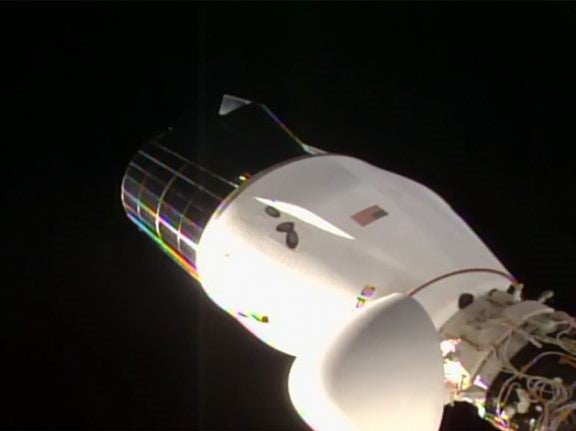SpaceX Dragon: Dozens of mice aboard ISS see return to Earth delayed due to bad weather, Nasa says
Rodents are part of a zero-gravity study into ‘space-caused vision and bone conditions’

Your support helps us to tell the story
From reproductive rights to climate change to Big Tech, The Independent is on the ground when the story is developing. Whether it's investigating the financials of Elon Musk's pro-Trump PAC or producing our latest documentary, 'The A Word', which shines a light on the American women fighting for reproductive rights, we know how important it is to parse out the facts from the messaging.
At such a critical moment in US history, we need reporters on the ground. Your donation allows us to keep sending journalists to speak to both sides of the story.
The Independent is trusted by Americans across the entire political spectrum. And unlike many other quality news outlets, we choose not to lock Americans out of our reporting and analysis with paywalls. We believe quality journalism should be available to everyone, paid for by those who can afford it.
Your support makes all the difference.SpaceX has been forced to delay the return of several dozen mice aboard its Dragon capsule due to poor weather conditions at the splashdown site off the coast of Florida, Nasa said on Monday.
“Teams are currently assessing weather conditions to determine the next opportunity for undocking,” the US space agency wrote in a blog post.
The SpaceX Dragon resupply ship was due to undock from the International Space Station (ISS) on Monday morning before splash landing several hours later off the coast of Daytona Beach, Florida.
The Dragon craft arrived to the ISS last month carrying materials for scientific investigations to be conducted aboard the orbiting laboratory.
Astronauts loaded samples from these studies onto Dragon over the weekend, including several dozen live mice and microbial samples.
“Scientists on Earth will examine the mice for insights into advanced therapies to treat space-caused vision and bone conditions,” Nasa said.
“Heart tissue samples and microbes will also be looked at, among other samples, to learn how to keep astronauts healthy and spacecraft clean and safe.”
The eyesight study hopes to understand whether the vascular changes created in space can impair vision.
It is also thought that space radiation could affect the vision of 40 per cent of people aboard the ISS.
The latest Dragon mission is SpaceX’s 21st contracted commercial resupply mission for Nasa, launching from the Kennedy Space Center in Florida on 6 December.

Join our commenting forum
Join thought-provoking conversations, follow other Independent readers and see their replies
Comments